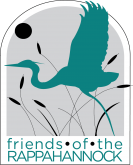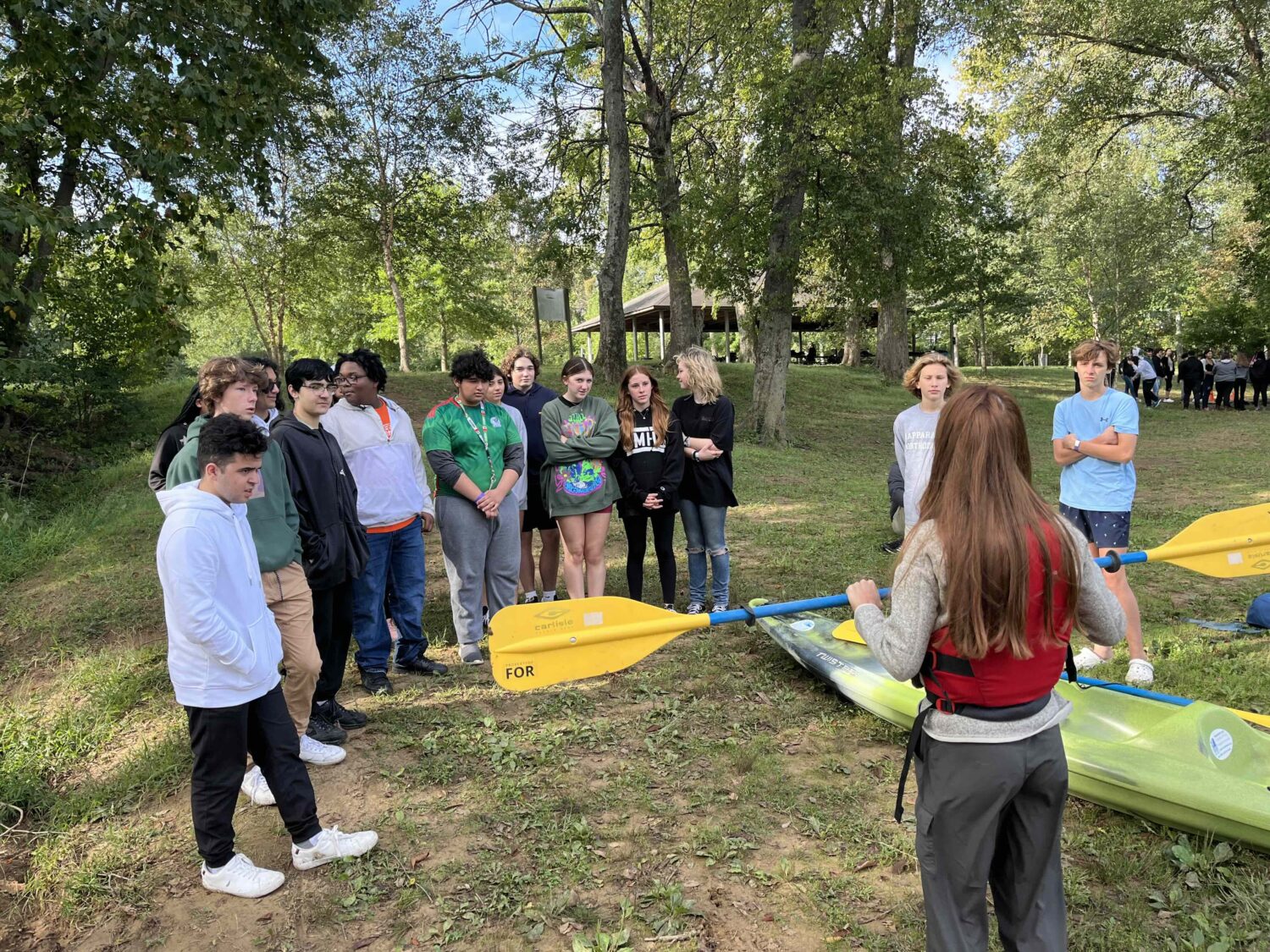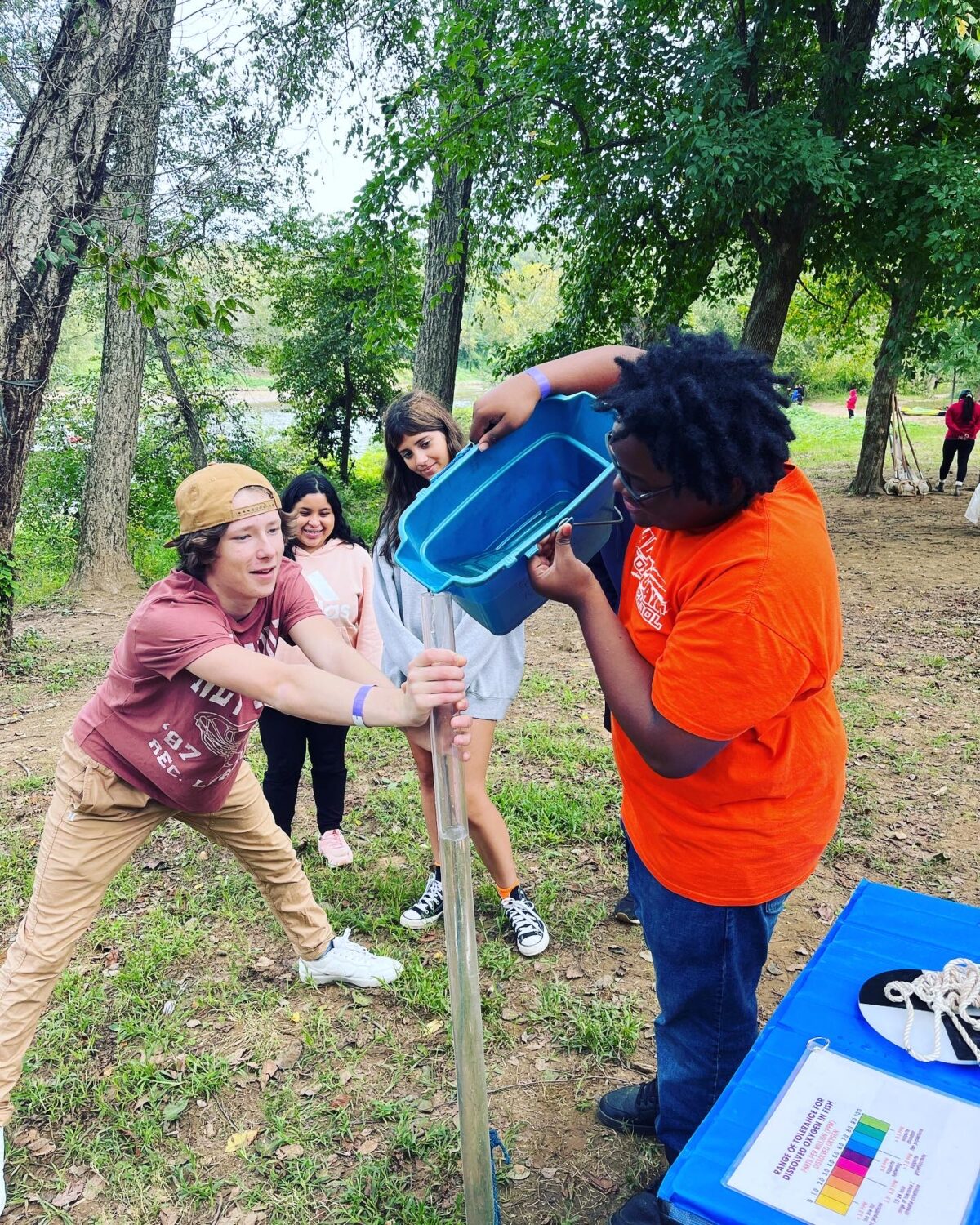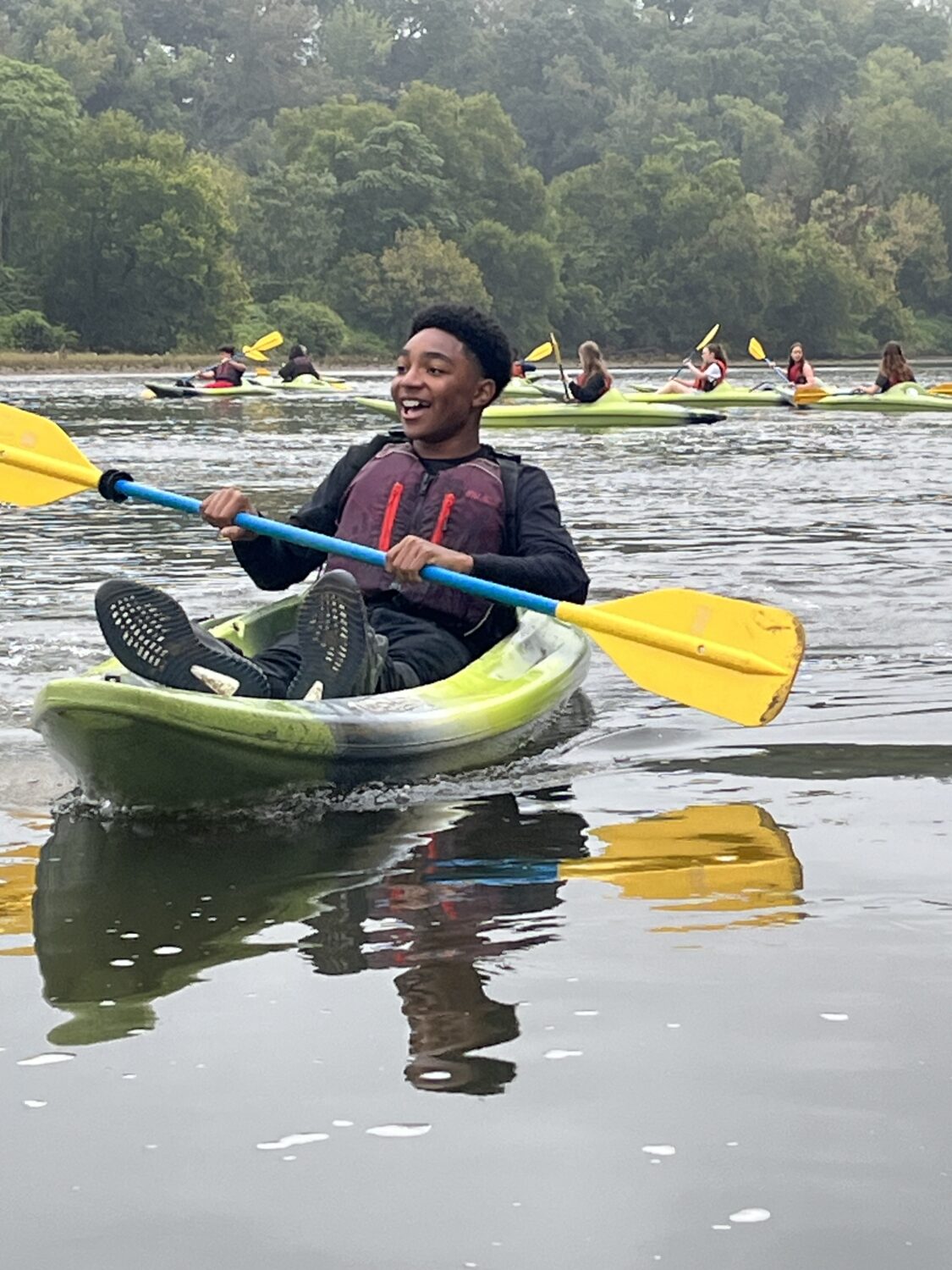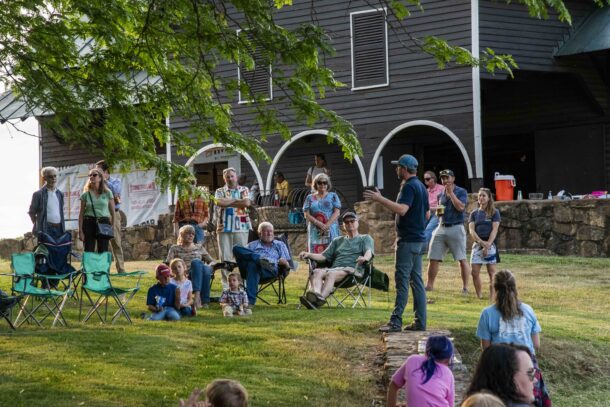Imagine the sound of the water trickling over the rocks as you paddle through a ripple. The smell of the morning air as the mist evaporates off of the river’s surface. The Eagles perched on the tall branches overhead swooping down to catch their breakfast and the great blue herons wading in the grasses along the banks. The noise of the city and the stresses of the day melt away as you float under the bridge. The feeling of peace and weightlessness that comes from a day on the water is something that can transform a person’s perspective.
The Rappahannock River is the Northeastern border of the City of Fredericksburg, less than half mile from the City’s High School, James Monroe High School. While the river is ever present in their lives, serving as a natural border for the City and a source of drinking water for its residents, many of the students have never taken the time to get to know this amazing resource.
After many years of dreaming about offering a Meaningful Watershed Educational Experience to City Schools students, everything finally fell into place in 2021. Katie Pomeroy, FOR Membership Manager and Fredericksburg City School Board Member used her connections with school administrators and voice as a parent to advocate for MWEEs.
“Education is one of the three pillars of FOR. We know that when students experience outdoor hands-o
n experiential learning, these lessons have a more prolonged and profound impact. When I started working at FOR in 2018 I saw my colleagues in the education dept bringing MWEEs to students and professional development to teachers in schools across Spotsylvania and Caroline Counties. They were taking these students out on paddling trips, doing hands-on water quality experiments, and inspiring these students to care for the health and scenic beauty of our watershed. “
A true advocate for the students, Katie, pushed for Fredericksburg City Schools to partake in the life-changing experiences she had witnessed FOR educators deliver in many of our neighboring counties within the Rappahannock River watershed. She saw our expertise in actions, she believed in our passion.
At the same time, Jennifer Gron, FOR Field Trip Coordinator, was taking stories of the MWEE work FOR was doing with local schools home to her husband, Karl Gron. Karl, who was then the Science Department Chair at JM, was excited about the possibility of bringing experiential place-based learning to the Environmental Science students. Together they hosted a bonfire at the FOR beach, where Mrs. Gron showed the teacher what FOR could offer their students and how the MWEE program can be tailored to support the teachers’ needs.
Eventually, all things merge into one, and a river runs through it. – Norman Maclean
In 2021, FOR inspired all parties into action. We wrote a grant to support the MWEE program and were soon awarded a NOAA-funded three-year grant in 2022 to make it happen.
_______________________________________________________________________
This fall, the freshman class of JMHS rode the brief bus trip to a local nature space, the historic Old Mill Park, to join us for their first MWEE experience. Here students enjoyed a three-part outdoor experience; kayaking, water monitoring, and learning the importance of having trees along a river.
FOR environmental educators always love to bring students kayaking on their local river! Before we deliver our safety talk and check life jackets, we always ask who has come to the river before. Unfortunately, we often hear very few students say yes and for a variety of reasons. Some think the river is dirty and polluted. Some think paddling is too hard. Some have no access to watercraft. The answers vary by how many students we bring to the river.
All reasons our environmental educators were geared to disprove, educate on and offer a resource for!
Most students enter the kayaks and their paddling experience with some nerves but during the 45 minutes on the water, we see their confidence and appreciation for the river grow! Soon, the hesitant paddling graduates into exploration and even some river races. By the end, we actually have to convince them to get off the water!
Additionally, we have found that taking students to the Rappahannock River provides an invaluable opportunity for them to engage in activities that were historically limited by racial barriers. In the past, kayaking and outdoor recreation was marketed towards and considered an activity predominantly accessible to caucasians. By bringing students with naturally diverse backgrounds to the river, educators are not only introducing them to outdoor recreation but also breaking down these outdated exclusions. This experience fosters a sense of inclusivity, equality, and shared enjoyment of nature, illustrating how outdoor education can serve as a powerful tool for dismantling historical prejudices and promoting a more inclusive society. The Rappahannock River becomes a symbol of unity, where students, regardless of their backgrounds, can paddle together, learn from one another, and appreciate the beauty of the natural world.
_______________________________________________________________________
While one group is on the water, the other is participating in the water quality station. Many of these students declare that they stay out of the river because they think it is dirty and polluted. This station gives them a deeper understanding of what it means to have polluted water allowing students to perform two types of water quality monitoring.
During chemical water quality monitoring students test the river water’s acidity, dissolved oxygen, turbidity and the presence of nitrates and phosphates. These tests yield a snapshot in time view of the water quality. They test the water that is passing through the area when our bucket is thrown into the river to collect our sample. Students learn that the metrics we collect are generally favorable.
But the gold standard is biological water quality monitoring. During this phase we learn of the long-standing health of the river. During this sampling, we collect and identify the benthic macroinvertebrates. These organisms live on the bottom of the river for two to four years until they emerge from the water, crawl up the bank, grip onto a dry surface and break out of their exoskeleton as their adult selves. Students are frequently appalled to see the number of “bugs” we find in the mud at the bottom of the river. At this point, someone usually declares that they will never set foot in water again. This is when we explain that these animals indicate a healthy and vibrant river. Indeed, a river with no benthic macroinvertebrates is a dead river. The presence of these “bugs” confirm the high quality of the river water for the long haul.
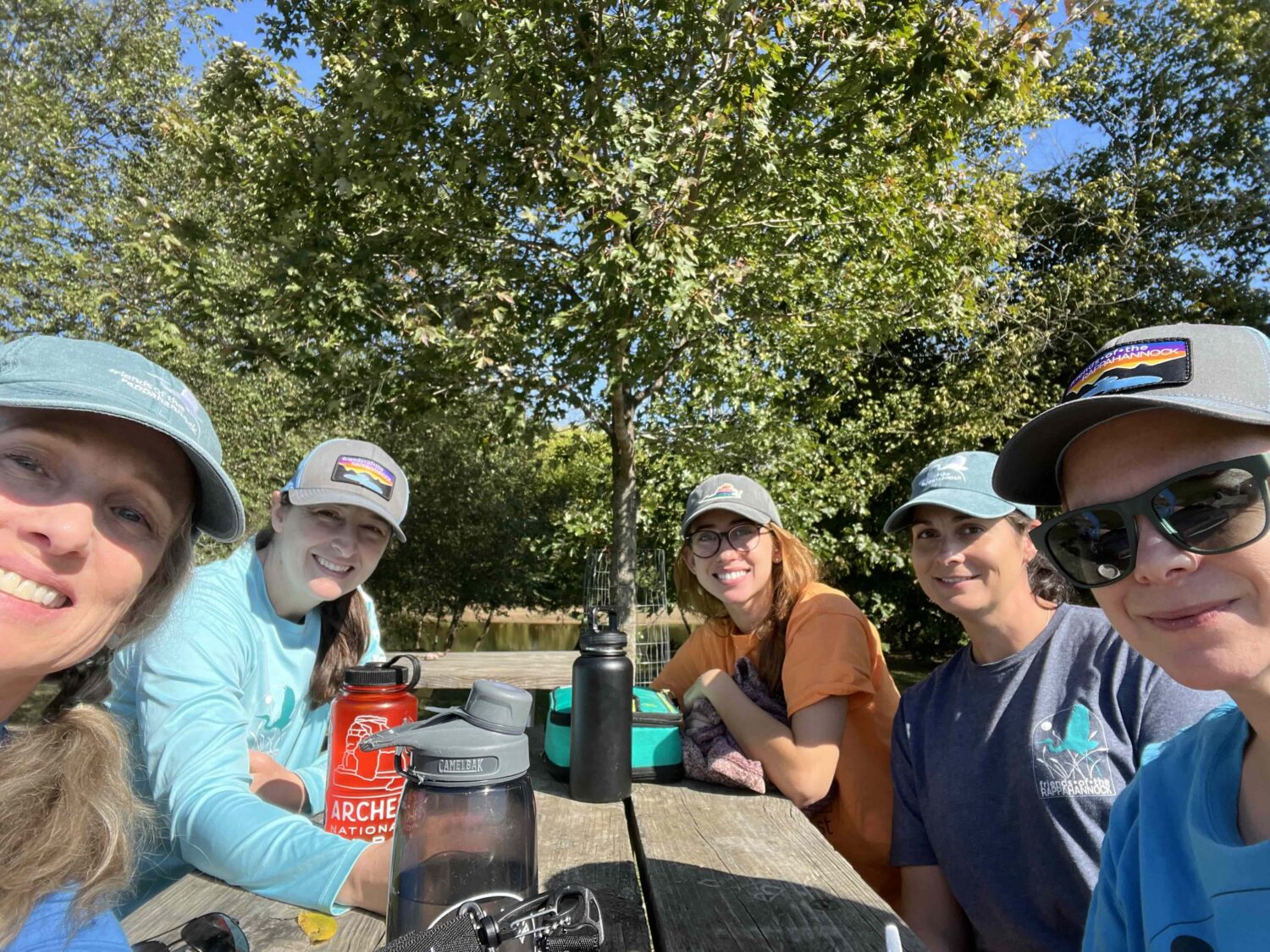
FOR Educators
At the end of the field trip, these students climbed aboard their bus, many giving one more glance back to the river that gives them so much. Years from now, these same students may look back and see this moment as the turning point for their own stewardship of the watershed they call home. We value introducing students to their local waterways because we strive to help them form a beautiful version of their town in their memories. Young people who grow up appreciating their river and outdoor spaces become adults that are invested in protecting their health and resources.
